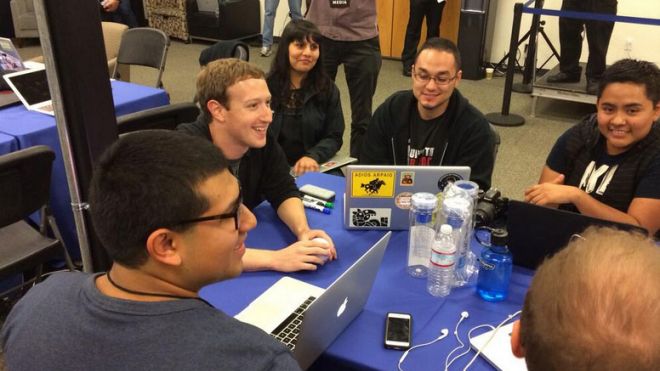
At the Kapor Center for Social Impact, we are always looking toward creative ways to channel technology to create positive social impact. One of the most exciting ways we do this is by empowering youth–particularly underrepresented youth of color–to be more than just consumers of technology, but producers of it as well.
Young people live in an app world, and youth of color use mobile technology at greater rates than their white counterparts. However, for many young people of color there are tremendous barriers to becoming a technology producer–everything from a lack of computer science education in the classroom to a lack of access to mentors and role models. Community-based hackathons are one way to lower these barriers by bringing resources and inspiration directly to the students. It works! Check out the successful outcomes of the past LPFI Level the Coding Field Hackathons and Startup Weekend Black Male Achievement.
Recently, the Youth Tech Health (YTH) led a hackathon in the Ashland Cherryland area of San Leandro, CA, along with the REACH Ashland Youth Center, and the Level Playing Field Institute. Ashland Cherryland was chosen because it is particularly underserved. There are no health clinics nearby, no banks, and no grocery stores. Yet there in the middle of it all is a multi-million dollar oasis known as the REACH Ashland Youth Center. It is a safe haven for youth 11 – 24 years old in the area and every day it is packed with young people hungry to learn.
The hackathon had a special focus on community health. Forty young people and another 20 volunteers participated, including specialists in youth health and software engineering Participants were divided into teams and given an ambitious goal: design an app to solve a health problem in their community. The results were astonishing.
[vsw id=”Sfjq066cNIA” source=”youtube” width=”325″ height=”244″].
These hackathons are unique from traditional industry hackathons in a couple of key ways. Participants don’t come to the event with a lot of technical skills, and they are not there to build a technically amazing gadget. Instead, the hackathons are design-thinking driven, and meant to solve real community problems by channeling the unique knowledge and understanding that comes from living in the community and experiencing the problems firsthand.
The facilitator and the developer volunteers are there to guide the team in discovery, interpretation, and ideation. The participants bring their creative thinking, youthful energy and real-world knowledge. With today’s youth always connected, finding answers is already second nature. Our job is to provide a space to challenge them to synthesize information to create a solution. The result is amazingly creative apps which could only come from a resident from that community. The winners of the hackathon won a limo ride to the larger YTH conference in downtown San Francisco where they presented to 400 people. It was a powerful, empowering moment for the winning team.
No doubt, our winners would likely never have participated in the San Francisco hackathon had they not first had the experience of a community based event. Indeed, the barrier to participating in a conference at a very nice hotel in the middle of San Francisco alone would keep many of the children from being able to attend.
When young people are given the tools and confidence, they can change their own community by using the resources based in the community. This is why community impact hackathons need to stay in the community for sustainable impact.
